Here is a listing of the trees in the Mojave Desert near Mesquite Nevada. It is prepared as a help in understaning the plants and their uses to native peoples and based upon the book "Native Plants of Southern Nevada: an Ethnobotany" by David Rhode.
Trees:
Desert Plants: Succulents | Cacti | Lg. Shrubs | Sm. Shrubs | Herbaceous | Trees
Western Honey Mesquite (Prosopis Glandulosa var. torreyana) [S Paiute: "o'pimb, 'opimpi"]:

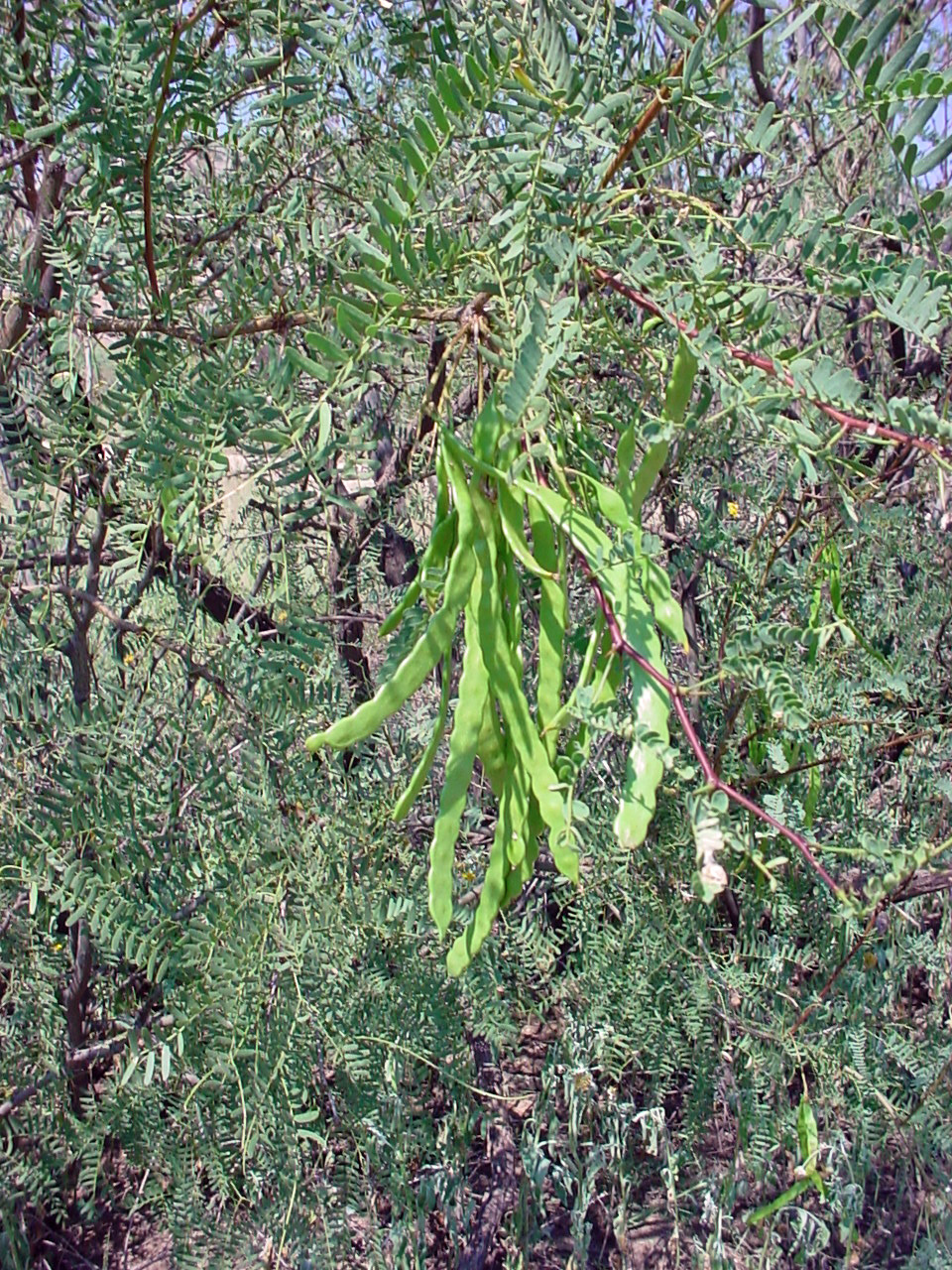
A many-branched, thorny tree or large shrub growing to 10-25 ft. tall. Has long, narrow, small linear leaflets growing opposite one another on a long central stalk. Has small yellow flowers on pendulous tassels. Fruit are flat green pods filled with beans and turn brown and dry. It is deeply rooted so not restricted to watered valley oases. Dunes often bury much of the plant. Native people cached seeds for future use. Granaries built especially for Mesquite pods could store up to 800 pounds, a few days harvest, supplied a families yearly needs. At 5.6 percent protein, 14 percent fat, and 47.5 percent carbohydrates it contained 1536 calories per pound. Three women could produce 88 pounds of flour in 8 hours for 5600 calories/person-hour – pinyon nuts are 840-1400 cal/person-hour.
Actually cultivated by desert people it was an important food source: pit-roasted pods, tea from leaves, boiled greens from leaves and flowers, thickening paste or flour from pounded beans and chewed into paste for ant bites. Young pods can be eaten raw as a snack, boiled as string beans or mixed with bacon, onion, tomatoes and potatoes for a delicious soup. An excellent firewood for cooking, the coals hold high heat for a long time. Arrow tips, bows, mortars and ceremonial sticks were all made out of Mesquite wood.
Screwbean Mesquite (Prosopis pubescens) [S Paiute: "wi'ump, kweirum"]:
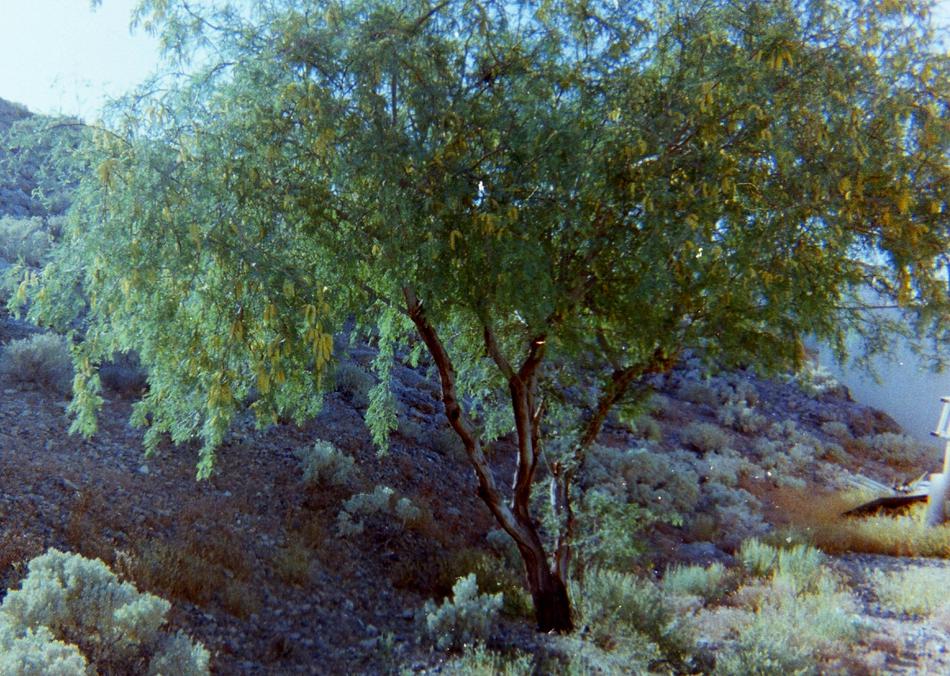
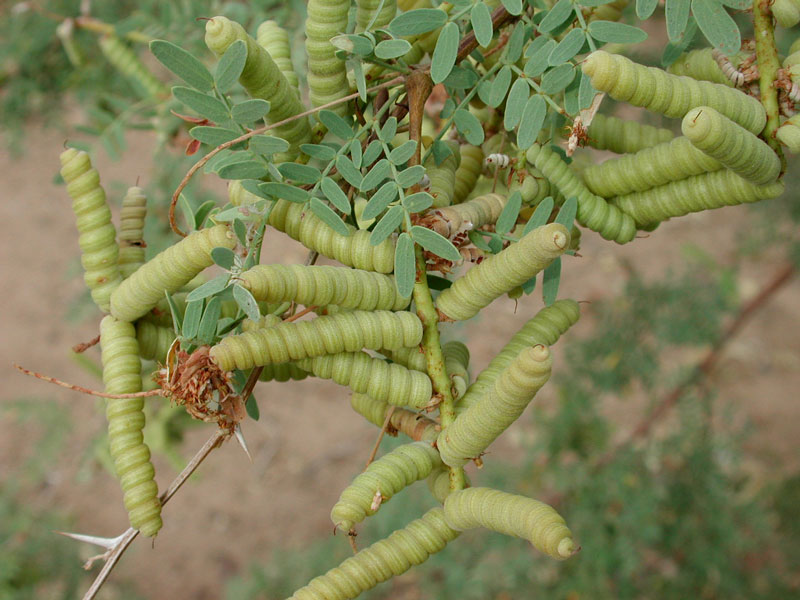
Related and similar to western honey mesquite it grows up to 20-30 feet tall in dense thickets. Leaflets are also similar except short, oval and hairy. Flower tassels are yellow and spikelike with tightly coiled pods in bunches of 2-10 which ripen in summer. It needs much more water than its cousin so is less prevalent.
Ripe pods were fermented for about a month in a pit lined with arrowweed until they sweetened and turned red. Cured pods were either stored or processed into meal. Seeds were usually ground separately and added to water for nutritious drink. A bit rare it was sometimes used for barter. Sap from the bark of the tree was soaked in water to make an eyewash; and, most importantly in the desert, the large trees give welcome shade.
Velvet Ash (Fraxinus velutina) [S Paiute: "ya-peep-a"]:
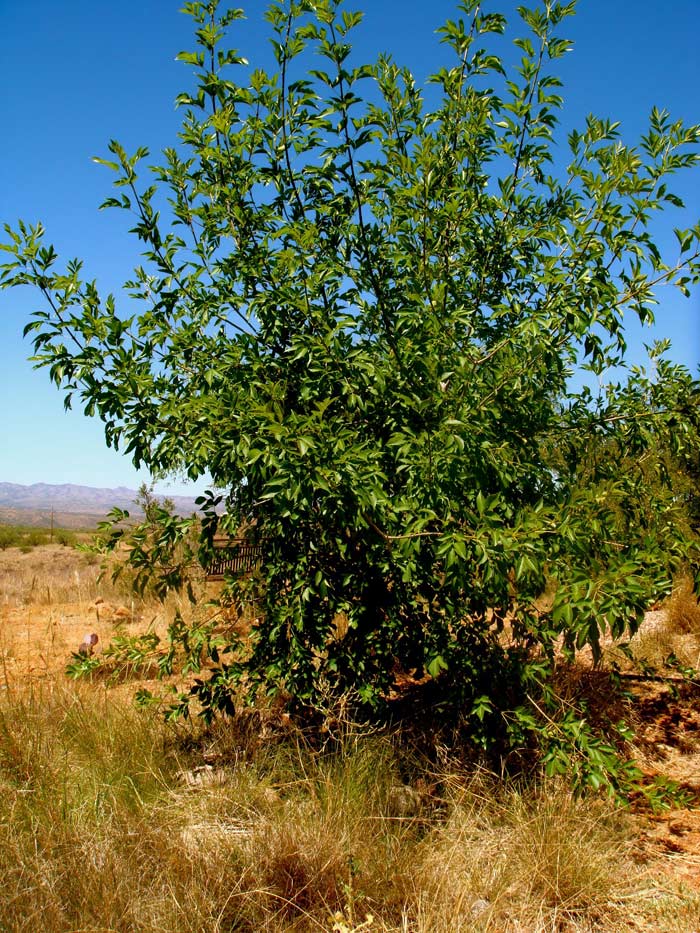
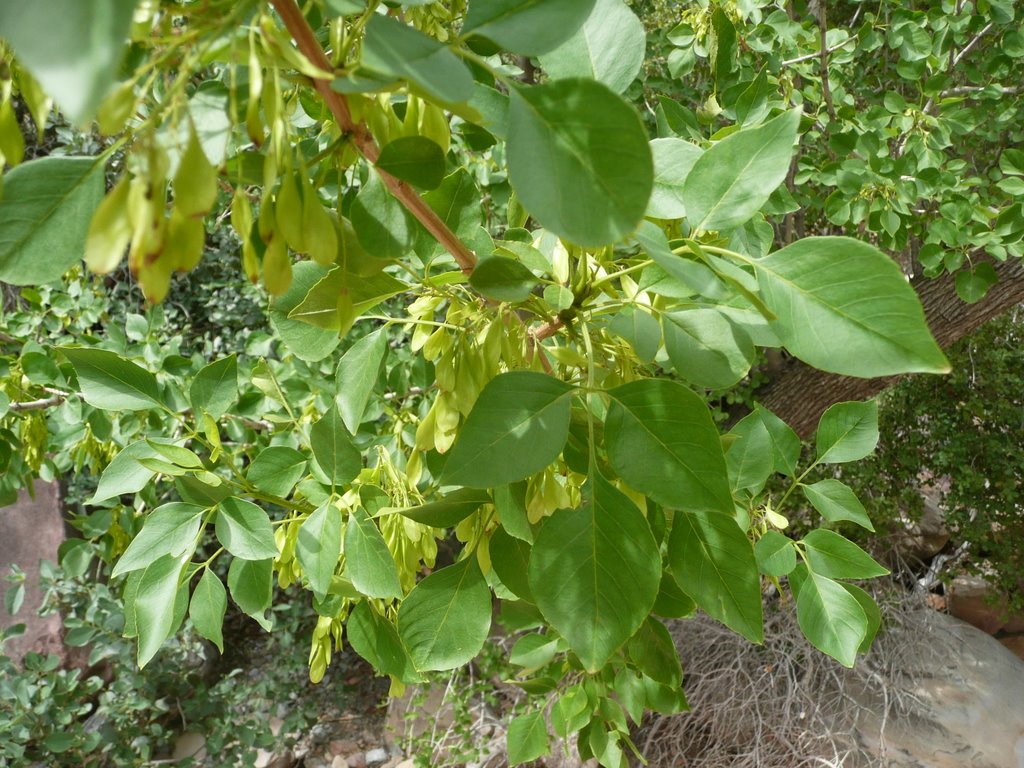
Large spreading tree up to 35 feet tall with circular twigs covered by velvety hairs. Leaves have 5-9 lanceolate to elliptic, sometimes serrated leaflets arranged pinnately on a 4-10 inch petiole and are deciduous. No petals on its flowers but bright yellow stamens on the male clusters. A rice-grain sized seed has a papery 1 inch wing and is in clusters.
Found in meadows and around springs with Screwbean Mesquite, its wood is used for tools and utinsils. Straight-grained, strong and pliable (when green) it holds its shape when dried. Used for cradleboard frames, bows, pinon hooks, walking sticks and plows it is favored because it would not break. It was also used to pull desert tortoises out of their burrows as well as for shaman's staff of office.
Singleleaf Ash (Fraxinus anomala) [S Paiute: "ya-peep-a"]:
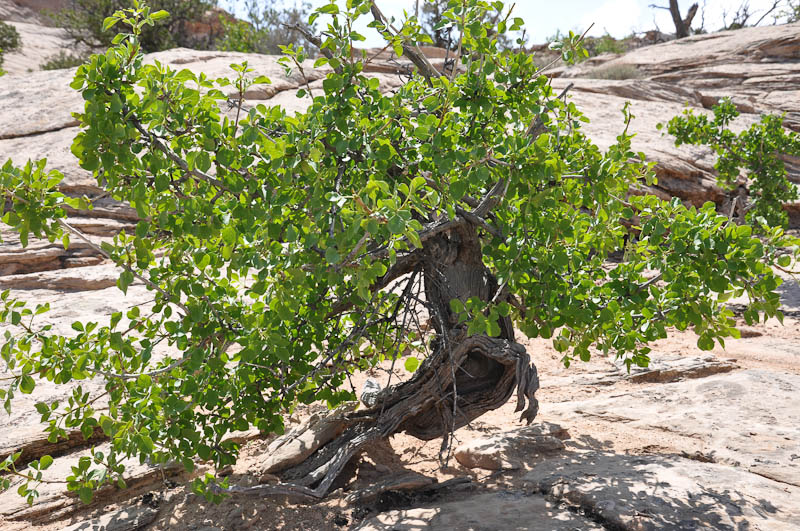
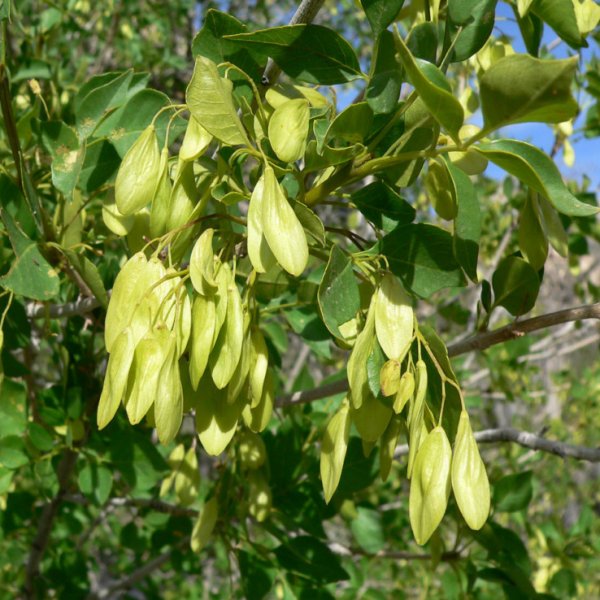
Similar to velvet ash in its use it differs slightly in its appearance. A small tree or large bush it has nearly square, rather than circular, branchlets. Leaves have a single ovate leaflet (occasionally there may be three leaflets on a leaf) with the terminal one being the largest. Male flower clusters are orange (instead of yellow) and the wing extends all along the body of the flattish (not rounded) seed.
Found in meadows and around springs with Screwbean Mesquite, its wood is used for tools and utinsils. Straight-grained, strong and pliable (when green) it holds its shape when dried. Used for cradleboard frames, bows, pinon hooks, walking sticks and plows it is favored because it would not break. It was also used to pull desert tortoises out of their burrows as well as for shaman's staff of office.
Sandbar Willow aka narrowleaf willow(Salix exigua) [S Paiute: "su'hava, suhuva"]:
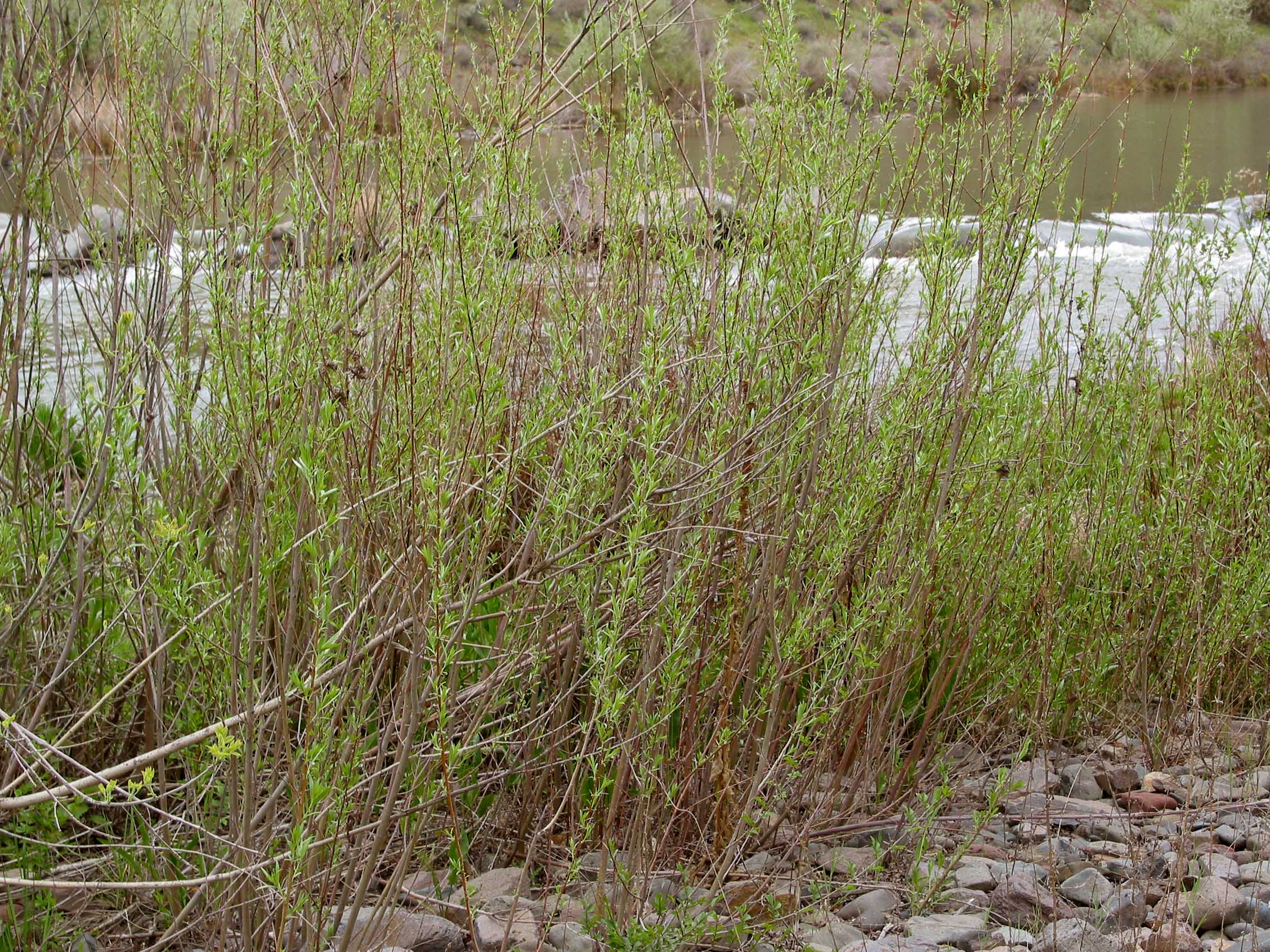
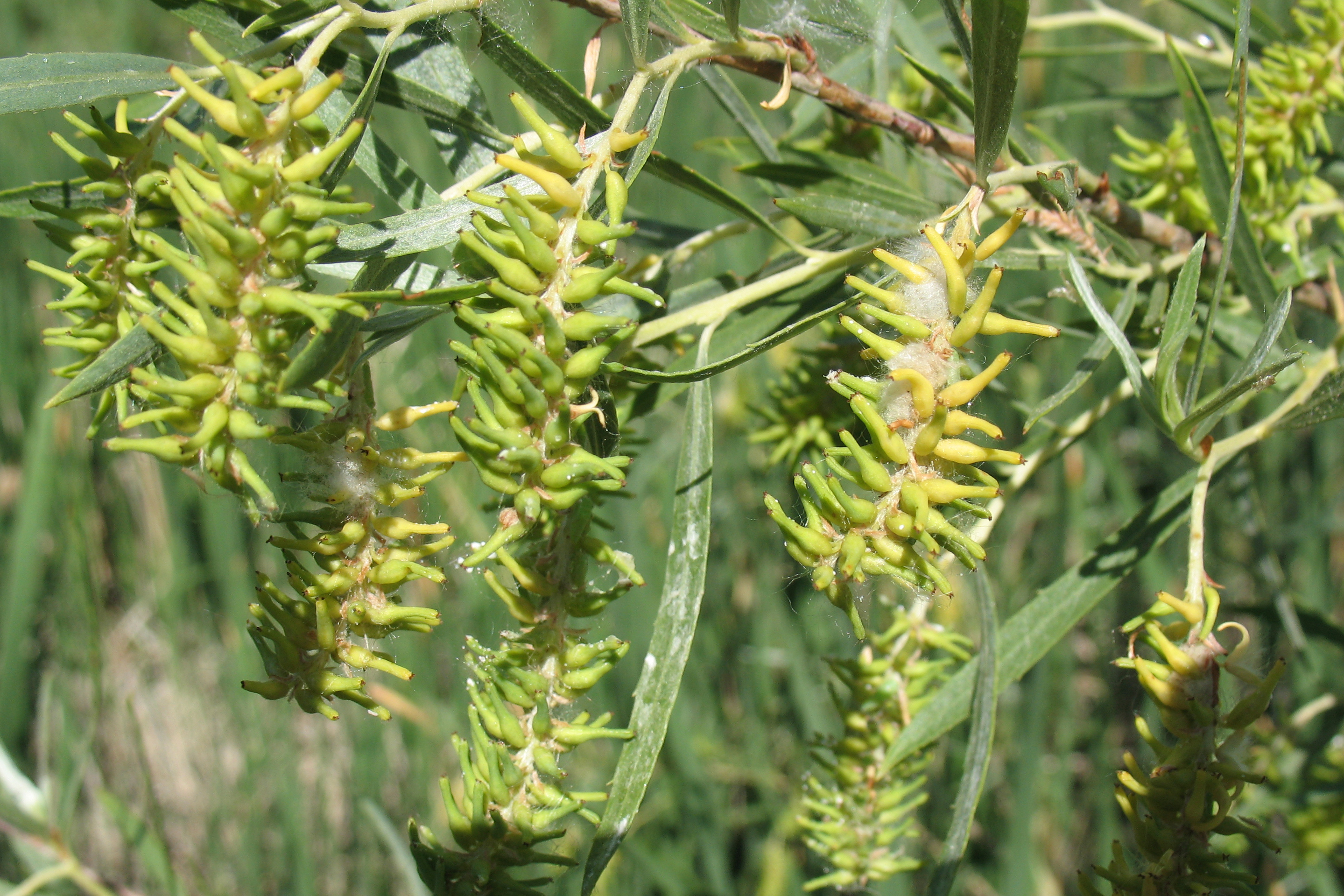
A small, 3-6 foot thicket plant with gray-green, 2-5 inch long narrow leaves which grows in moist to wet soils. An important material for weaving of baskets, water jugs and cradleboards the plants were transplanted and tended to improve supply. Peeled before becomming too dry the bark was coiled and saved. Split and stored the stems were soaked before weaving.
Larger stems could be used in walls of dwellings, bows and arrows. Bark was chewed or boiled for its pain relieving salicylic acid (asprin). Boiled twigs for venereal disease and root bark tea for a spring tonic. Charcoal from roots were pressed into pills for dysentery and influenze. Young twigs in soup made a laxative, mashed roots made a gum-poultice for toothache and a boiled leaf/twig extract made a tonic for dandruff.
Gooding's Willow aka Black Willow(Salix gooddingii) [S Paiute: "pawaxanav"]:
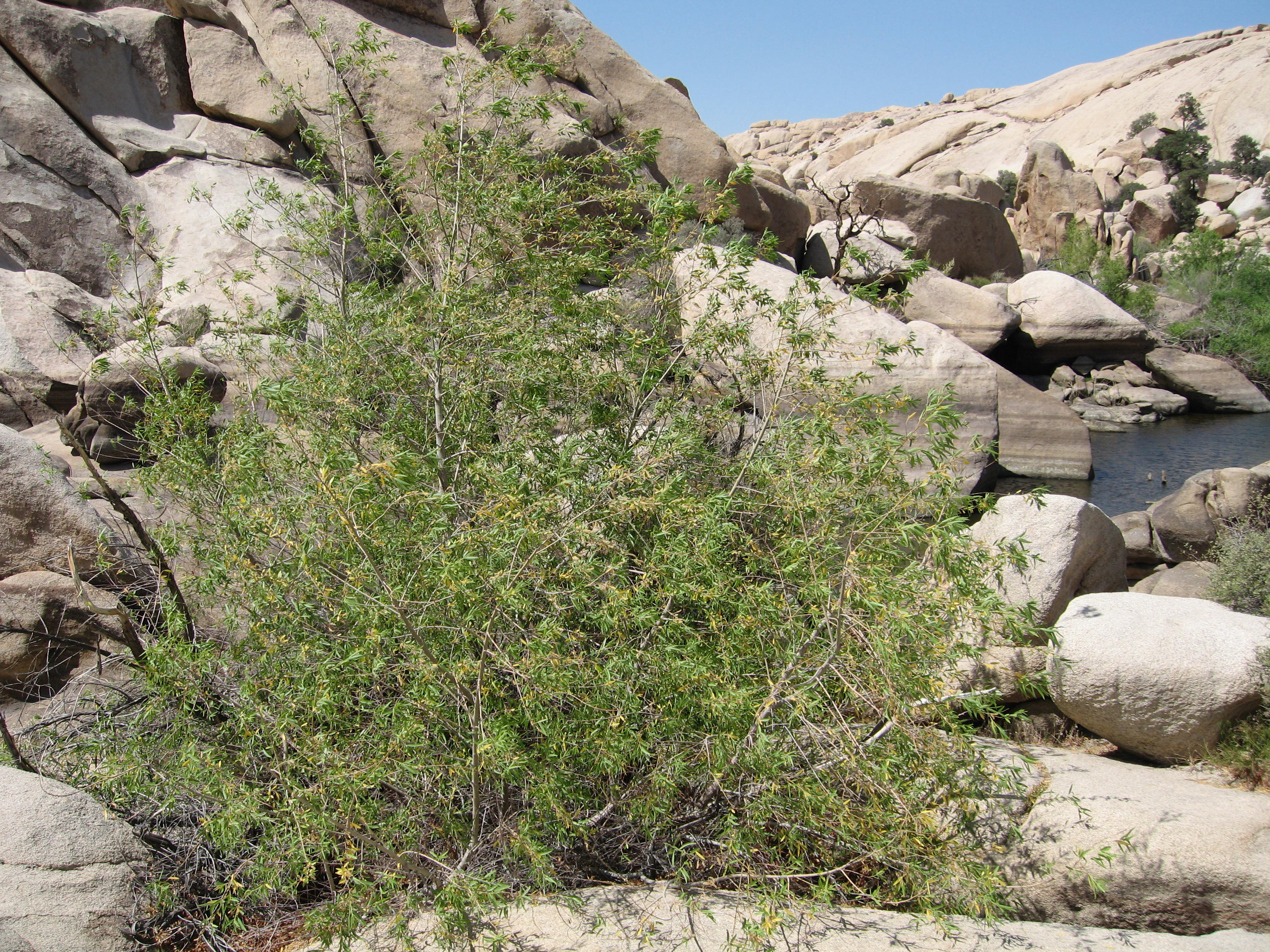
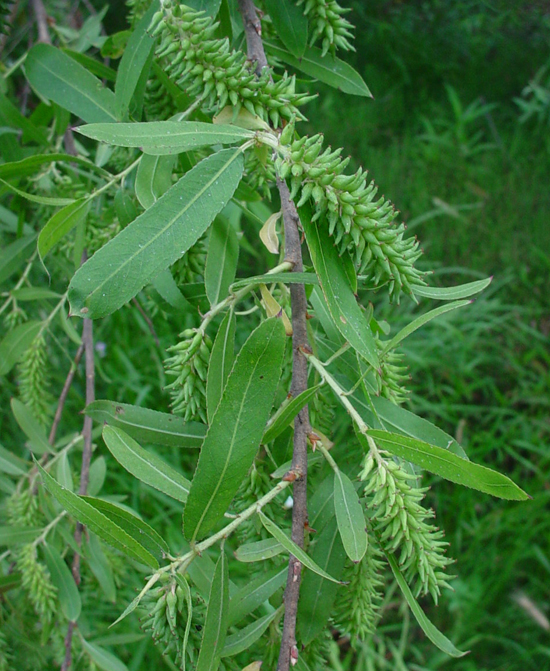
Similar to Sandbar Willow in its uses this is a tree instead of a bush. It can grow 40-50 feet tall having a thick trunk and coarse black bark, yellow twigs on the branches and narrow leaves up to 5 inches long. It also grows near springs and streams. It is much more brittle therefore not used for weaving.
Utah Juniper (Juniperus osteosperma) [S Paiute: "wa'ap, wa'api (tree), wapampi (fruit)"]:
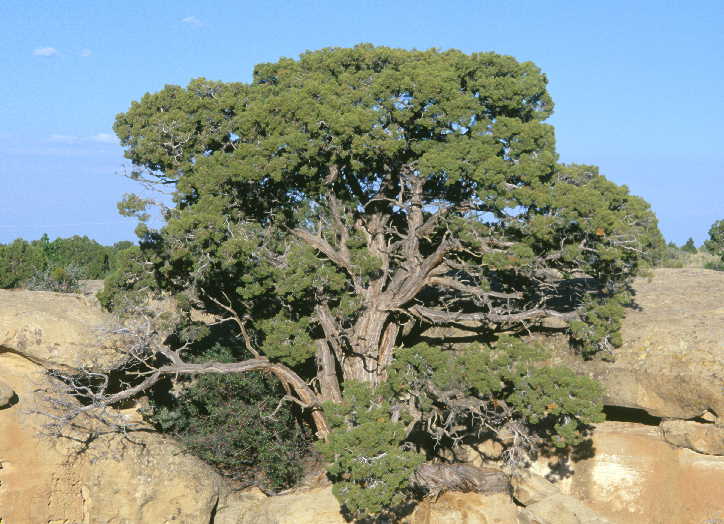
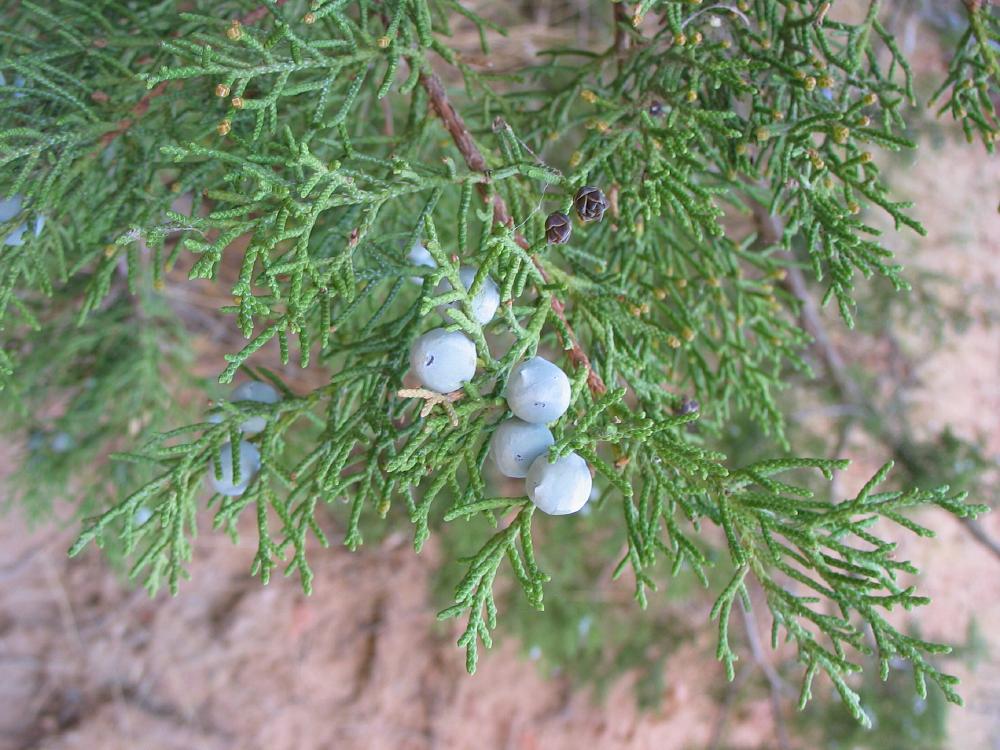
An evergreen shrub often 10-20 feet or more high with red-gray fibrous bark and stout twigs covered with gright green scale-like leaves. Reddish brown or bluish berries appear in clusters on the twigs and have a powdery coating.
Called a "very worthy tree" its uses are not only historical but modern. Young twigs and berrys were boiled for a cold and cough remedy which could be used as a body wash as well. A paste of ground twigs was heated in a cloth and held to a swollen jaw, sore throat or toothache for relief. Burned twigs cleared headaches, colds and produced sweats. A berry broth treated asthma and numberous other ailments. Strips of wood could be cut from a straight tree for bow making. Its wood and bark was used for fuel, varied construction, splints and roofing material. Bark fiber made good sandals, skirts, rope and a woven "slow match." The smoke is used for prayers and to cure buckskin.
Punctured seeds were strung as necklaces after a rat or squirrel had eaten the outer fruit and chewed a hole in one end of the seed. Berries can be crushed, seeded and eaten raw. Even an insect secretion on the tree was eaten ["noo-ahn-tup"].
Singleleaf Pinyon Pine (pinus monophylla) [S Paiute: "tuvap, tuvwap"]:
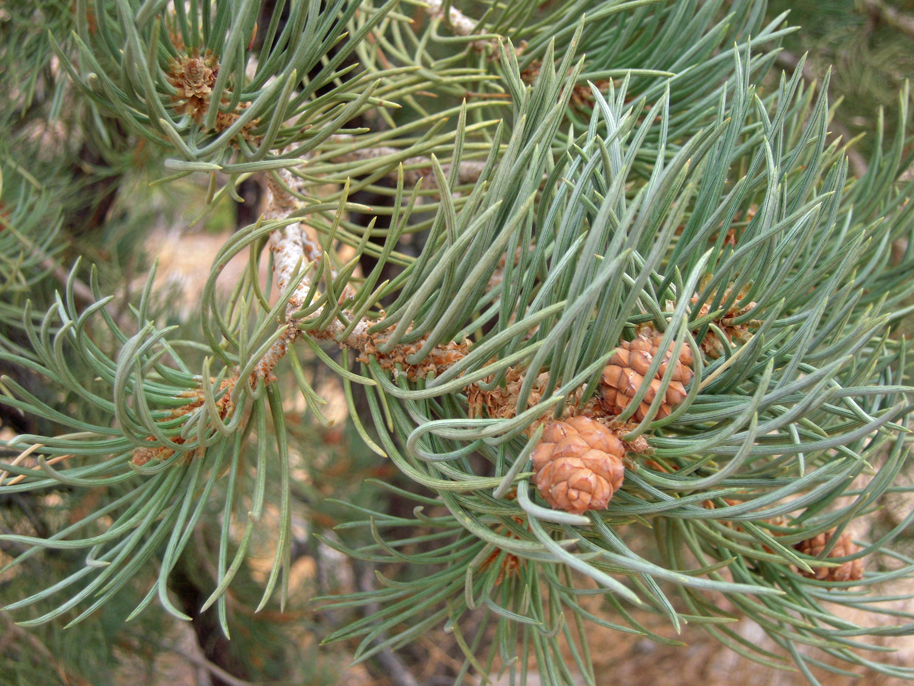
Red Pocket Tanks (Dec 09)
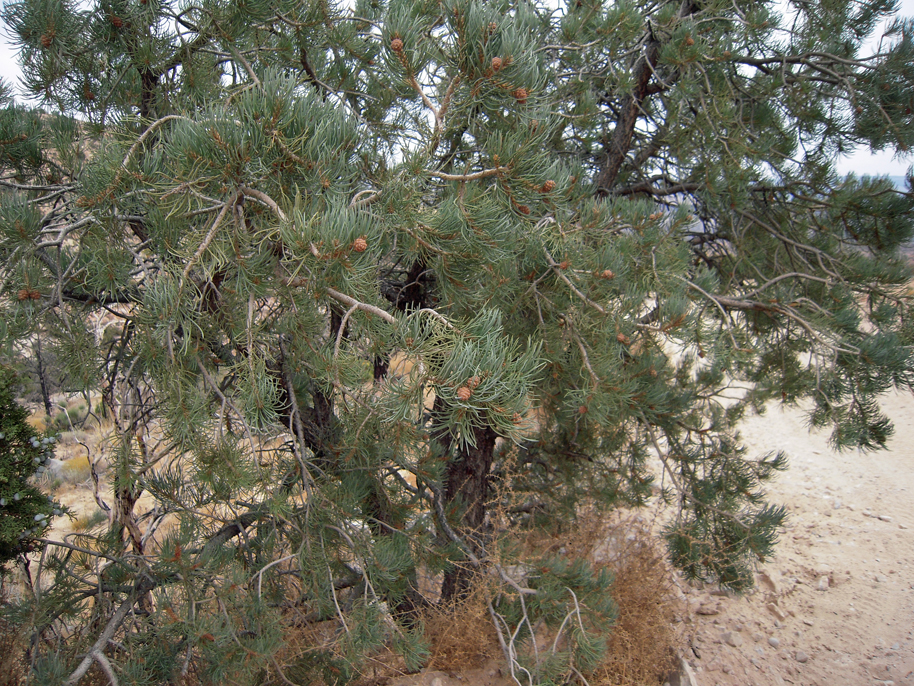
Lime Kiln Canyon (Dec 09)
The dominant small pine in the South Great Basin, it is densely branched and has round needles growing singly (not in bundles). Cones ripen in fall and abundance varies by year, climate and unknown factors. It is seen at between 5800 and 8500 feet elevation with Utah juniper – fir and limber pine at higher and Joshua trees at lower. An important food tree for Great Basin peoples, it caused them to relocate following the crops. "Brown collecting" meant beating seeds out of brown cones from branches onto mats under the tree, "Green collecting" meant pulling green cones from trees.
Fresh cones were pit roasted/steamed over sagebrush coals. Seeds were then shaken out, dried, cracked by rolling then winnowed from hulls. Older cones were tray-parched then hulled. Nutmeats were eaten fresh, roasted or ground into flour for mush or bread. Containing about 2215 calories per pound, they were a high- yield food source. An insect-derived secretion on the tree bark was sweeter than honey and inner bark could be eaten in severe want. Pine pitch was used for tea and steam which alemiorated colds, cleared lungs and for birth control. Heated resin drew out slivers, cured external wounds and made hot plasters for pains. Pitch was a waterproofing, adhesive, mortar, sealant and chewing gum. Wood was fuel, construction material and made mortars; children pinched split seed hulls into earlobes for ornamentaion.
Gambel's Oak (Quercus gambelii) [S Paiute: "kwiav, kwiavi, tomimpi (acorns)"]:
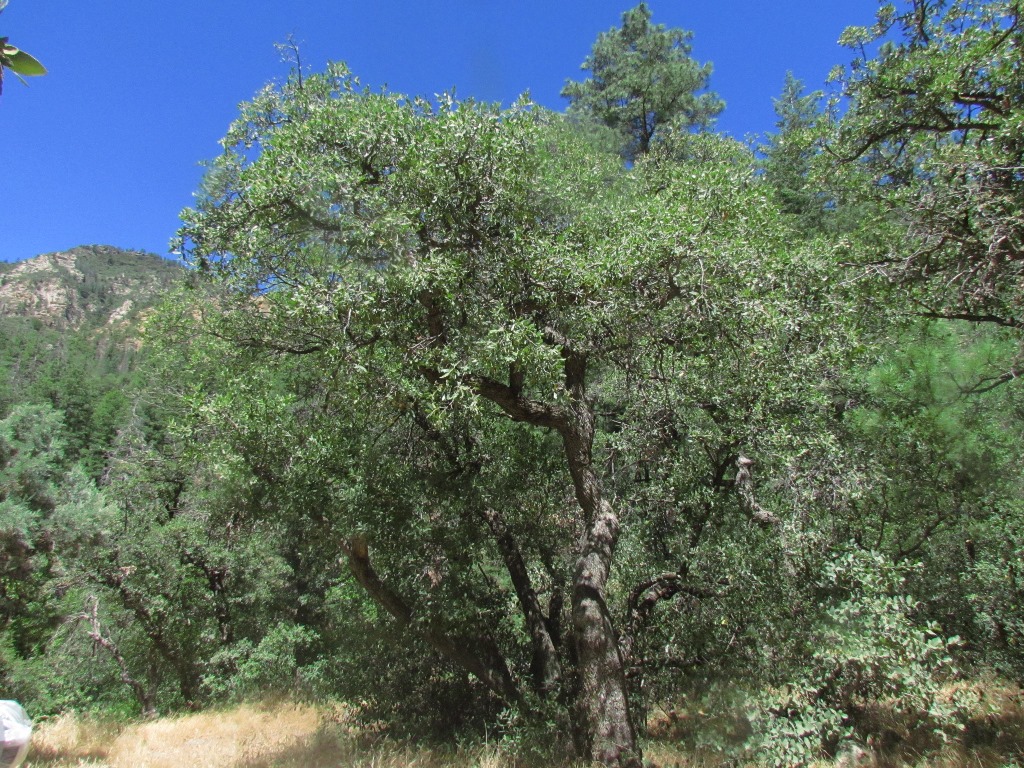
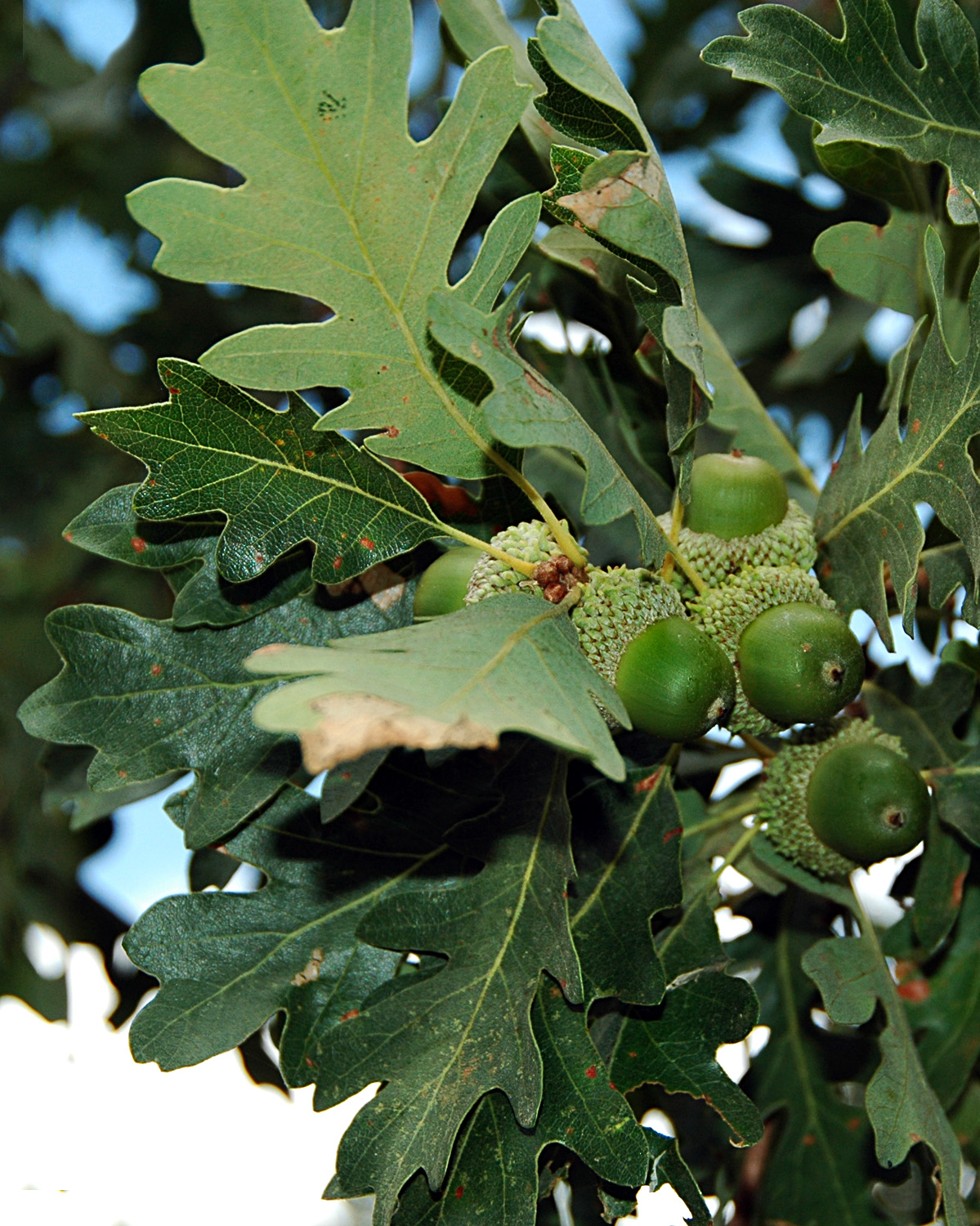
Less than 20 feet tall, it has one or more crooked trunks growing clonally in dense thickets or stands producing a closed canopy. Four inch leaves are deeply lobed, yellow-green in spring, dark green in summer, reddish in autum and deciduous. Summer acorns could be a food staple and were bartered.
First ground, the bitterness was leached out with running water into a mush nutritionally similar to pine nuts (2120 calories per pound) except preparation efforts makes them lower caloric yield. The hard wood was burned in ceremonies and for fuel as well as constructing spears, bows, canes and other items. A paint can be made from a fungus growing on the tree.
Mountain Mahogany (Cercocarpus ledifolius) [S Paiute: "tu-nam-ba, dunumbe"]:
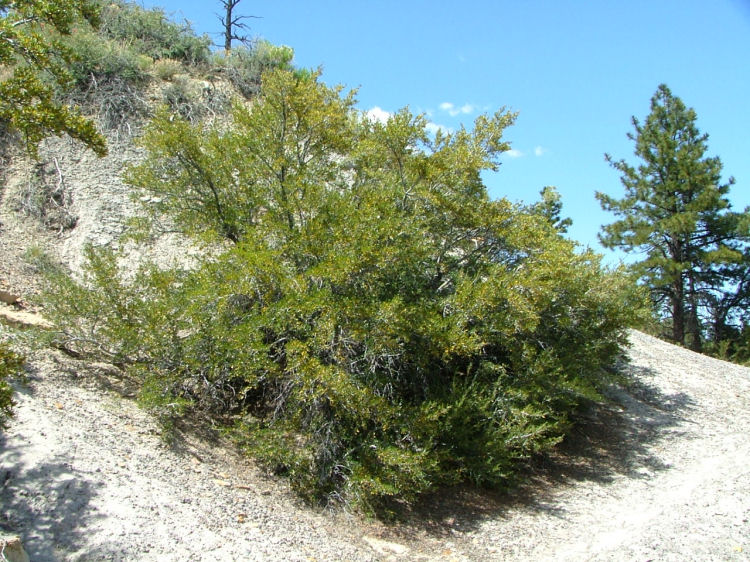
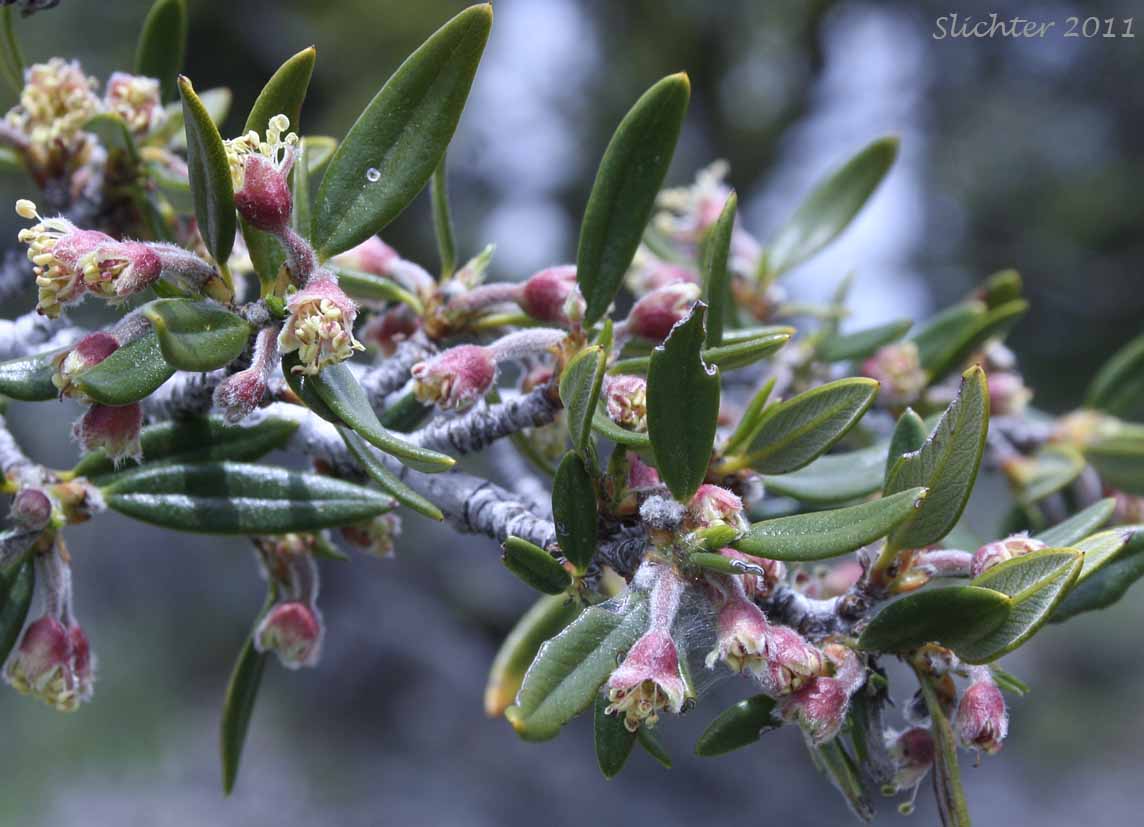
A small genus of five or six species of deciduous shrubs or small trees in the rose family (Rosaceae), native to the western United States and northern Mexico, where they grow in semi-desert climates, often at high altitudes. Possibly reaching 25 feet in height, they have sturdy, sometimes twisted red trunk and branches with narrow lanceolate leaves which can roll inward. With inconspicuous flowers the fruit is sharply pointed producing rice shaped seed bearing a long feathery plume.
The extremely hard wood was used for digging sticks and arrows and for frames of baskets. It burns hot and smoke free and the bark makes twine, rope, mats and baskets. Bark, dried for two years, was important for pulmonary disorders as well as treating cuts, sores, burns and wounds. Dried, it could make a powder or paste. A cold tea was a blood tonic, boiled a gonorrhea treatment. Dried sap powder was used for earaches, and leaves boiled with sage treated rashes.
Desert Plants: Succulents | Cacti | Lg. Shrubs | Sm. Shrubs | Herbaceous | Trees